Today's Guide to the Marketing Jungle from Social Media Examiner...
presented by 
The weekend is almost here, Alluser! Here's a recap of the most important insights, trends, and updates from the week. Catch up in minutes and go into next week prepared.
In today's edition:
-
Is your SEO strategy quietly sabotaging your sales?
-
Find out what your customers say when you're not in the room
-
7 Ways to adapt your campaigns to work with Meta Andromeda
-
Science-backed marketing tactics that sell more
-
3 Advanced ChatGPT features for any business
-
YouTube Updates: Collaboration Opportunities, Shorts Features, Creator Tools, and More
-
Why your AI content still sounds generic and how to fix it
-
🗞️ Industry news from Claude, Instagram, Snapchat, and more

SEO Tips to Boost Organic Sales Without Breaking the Bank on Ads
If you're leaning too hard on paid ads to drive traffic, but you're also not building something sustainable. When the budget dries up, so does your pipeline. That's where SEO becomes more than just a buzzword—it's your path to consistent, high-intent traffic.
In a space dominated by retail giants, small business owners and scrappy marketers often feel like they're playing catch-up. But with the right approach, eCommerce SEO can level the playing field. And no, it doesn't require a massive team or endless hours of technical tweaking.
This practical guide from Neal Schaffer breaks it down into clear, actionable steps that marketers like you can actually use, without needing to become an SEO expert. You'll learn how to make search engines your best unpaid salesperson.
Curious how your product pages can start ranking higher—and converting better—without pouring more money into PPC? Read more here.
How to Mine Reddit for Conversion Insights
You're probably tracking website clicks and conversion rates, but are you listening to the real conversations happening around your brand? Tucked away in Reddit threads and online forums are the unfiltered thoughts, hesitations, and emotional drivers that shape your buyers' decisions long before they hit your sales page.
By mining Reddit, you can see exactly what potential customers care about, where your competitors win (or flop), and which objections your landing pages might be missing entirely. Savvy marketers are using this technique to uncover goldmines of voice-of-customer insight.
In this mini training, Talia Wolfe walks through the exact steps her agency uses to turn Reddit posts into high-converting messaging, landing page improvements, and blog content ideas your audience is already looking for. Watch more here.
How to Use Meta Andromeda to Advantage
Meta's latest algorithm shift—nicknamed Andromeda—is changing the rules for advertisers. Gone are the days when tweaking targeting levers was your main optimization play. Now, Meta wants your creative to do the hard work. But what does that actually mean?
"Creative diversification" sounds simple, but it's redefining how marketers think about ad strategy. From dynamic formats to AI-generated visuals and primary text variations, there's a whole new set of tools and expectations that could make or break your campaign results.
You don't need more ads; you need smarter, more varied creative that speaks directly to different customer types across formats and placements.
This guide from Jon Loomer lays out exactly how to adapt your campaigns and shares practical use cases that even solo marketers can implement quickly. Read more here.
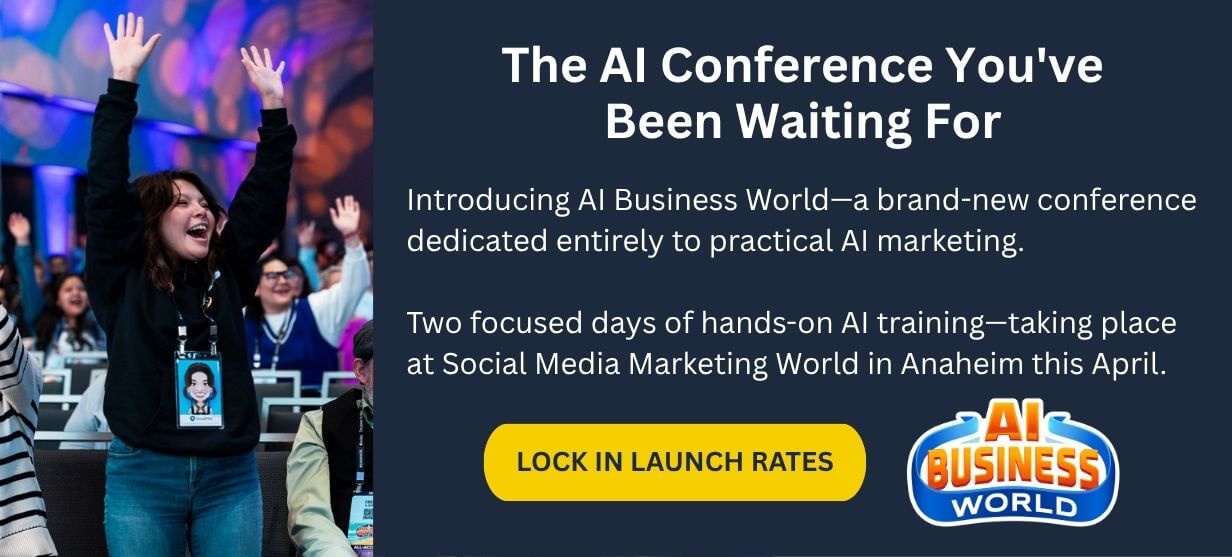
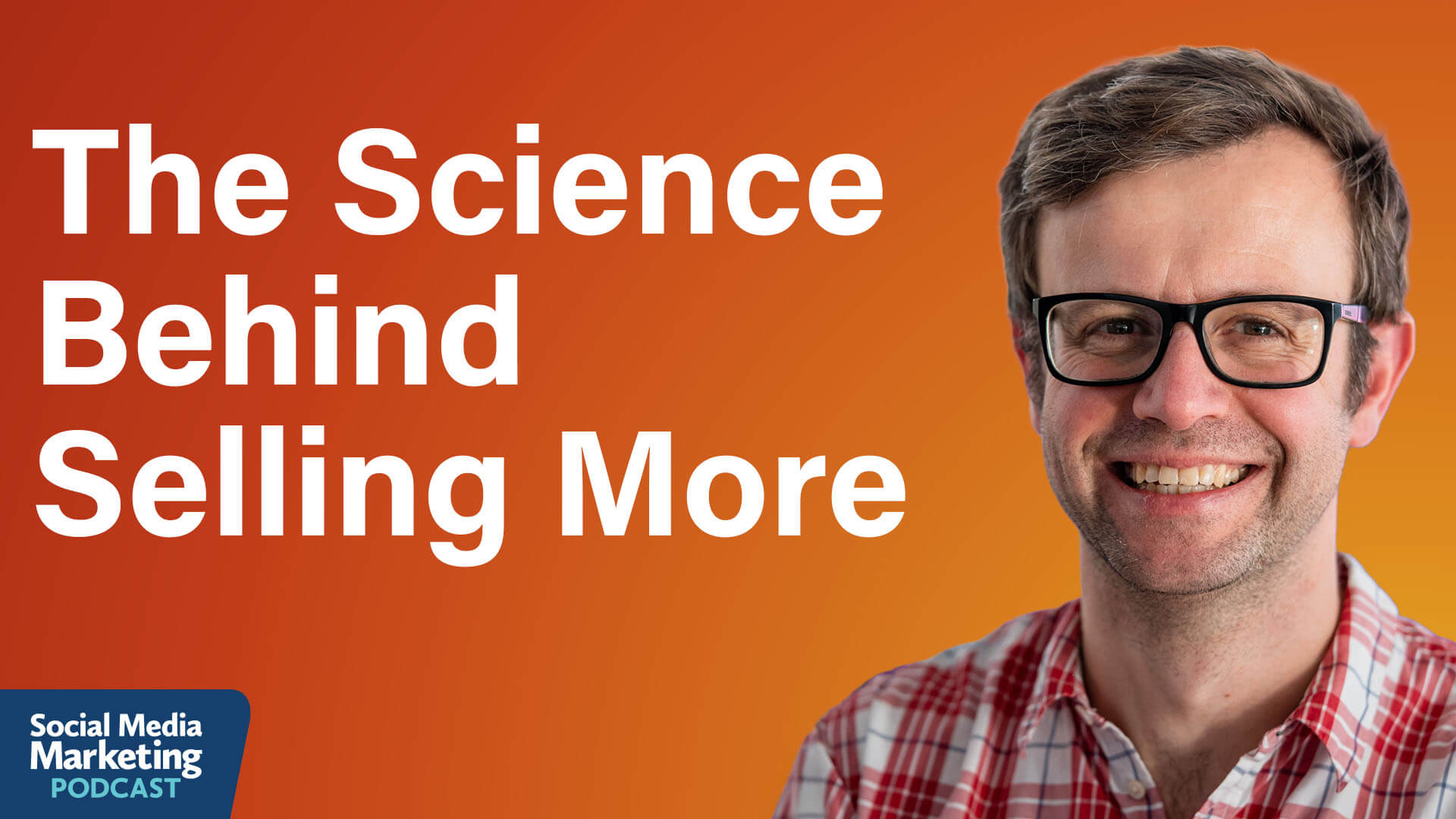
Applying Behavioral Science for Improved Conversions
If you work in marketing or advertising, you're fundamentally in the business of behavior change. Every campaign you create attempts to get people to switch from a competitor brand, pay more for your products, or buy more frequently. Each of these goals requires your audience to change its behavior.
Behavioral science is the experimentally based, robust study of what effectively influences people's behavior. This field doesn't examine what people claim influences their decisions, but rather what actually drives their actions.
For marketers, this distinction is critical because it reveals the gap between what consumers say they want and how they actually behave. By understanding and applying these principles, you can work with human nature rather than against it.
How to Use Pricing Psychology In Your Marketing
Pricing represents one of the most direct applications of behavioral science because price shapes perception in ways that defy pure logic.
Once you've set your price, you need to make that price as appealing as possible.
One powerful pricing principle is extremeness aversion, which describes how people tend to opt for the middle option when given three choices. Amos Tversky demonstrated this in 1992. He showed people two cameras. The basic camera cost $169, and a fancier camera with more features cost $239. When people chose which one to buy, there was an exact fifty-fifty split.
Tversky then recruited a completely fresh group of people and showed them the same two original cameras at the same prices with the same benefits. But he introduced a super premium camera at $469. A few people picked that super premium option, about 21%.
The fascinating change occurred in how people viewed the original two cameras. Previously, those two cameras were chosen at a one-to-one ratio. With the addition of the super premium option, that ratio shifted to one-to-three. The very basic camera dropped to 22% of sales, while the premium camera, now the middle option, jumped to 57% of sales.
What Tversky demonstrated is that people don't just pick based on the price, quality, and inherent attributes of a product. They are deeply influenced by what that product is surrounded by. The rule of thumb is that people don't want to go for the cheapest option because it might be low quality and they'll look mean. They also don't want the most expensive because it's probably over-engineered, overpriced, and they'll look like a show-off. People gravitate toward the middle.
The middle price of $239 is approached very differently depending on whether there are two options or three options. When compared only with the $169 camera, it looks $100 more expensive, and consumers think they're being wasteful. But when you've added the super premium $469 camera, people can now reframe that $239 cost as a $200 saving compared to the most expensive option.
If you have a monthly offering and an annual offering and you want people to pick the annual one, consider adding a two-year or four-year purchase option. Hardly anyone will pick it. Its role isn't to be picked. Its role is to reframe what the annual option looks like. Now the annual option doesn't look like much of an inconvenience or too long a time period because it's a year or two years less than the really long option.
Other topics discussed include:
-
Why Behavioral Science Matters for Marketers
-
How Humans Actually Make Decisions
-
Making Your Price Feel Smaller
-
Raising Your Price vs. Discounting Your Price
-
2 Ways to Establish Your Product as a Quality Option
-
How to Use Behavioral Triggers to Convert Consumer Intent into Customer Action
Today's advice is provided with insights from Richard Shotton, a featured guest on the Social Media Marketing Podcast.
Watch the full interview on YouTube
Advanced ChatGPT Features for Any Business
There's more to ChatGPT than just writing assistance.
ChatGPT's advanced features can save you hours every day: agent mode that acts on your behalf, vision mode that troubleshoots problems in real time, and deep research that produces comprehensive reports in minutes.
How to Use ChatGPT Deep Research for Academic-Level Investigation
To activate deep research, access it through the dropdown menu in the standard chat field.
Deep research mode transforms ChatGPT into an academic researcher capable of processing vast amounts of information quickly and thoroughly.
Where standard ChatGPT responses sometimes include non-existent links, deep research always quotes sources and provides clickable links to verify information. This academic rigor makes it particularly valuable for business decision-making, market research, competitive analysis, and strategic planning.
A client operating in fifty-two countries needed market research for 2030 focusing on the East Coast before expanding to other markets. Using deep research, Ramirez helped them craft a detailed prompt specifying the industry, geographic focus, and timeframe. In approximately twelve minutes, deep research processed one hundred seventy-three sources, read sixty-three pages, and produced a thirteen-page market research report. The client later reported that similar research would typically cost around thirty thousand dollars. The report not only validated strategies they were already planning but also identified two critical considerations they hadn't anticipated.
For vendor evaluation, users can upload multiple RFP responses and ask the system to research the vendors, evaluate them against specific criteria, and present findings in a matrix format.
The combination of deep research and agent mode creates particularly powerful workflows. After deep research compiles information and sources, users can activate agent mode to validate all sources by clicking through each link, ensuring accuracy and relevance.
For example, users can identify competitors, analyze their unique value propositions and messaging, and then use agent mode to compare their own positioning against competitors to identify improvement opportunities. The system can even identify emerging startups using artificial intelligence that established businesses should monitor.
Other topics discussed include:
-
What Misconceptions Hold Marketers Back From Benefiting From ChatGPT's Full Potential?
-
Using ChatGPT Agent Mode for Independent Task Management
-
How to Use ChatGPT Vision Mode as Your In-Pocket Help Desk
Today's advice provided with insights from Kendra Ramirez, a featured guest on the AI Explored podcast.
Watch the full interview on YouTube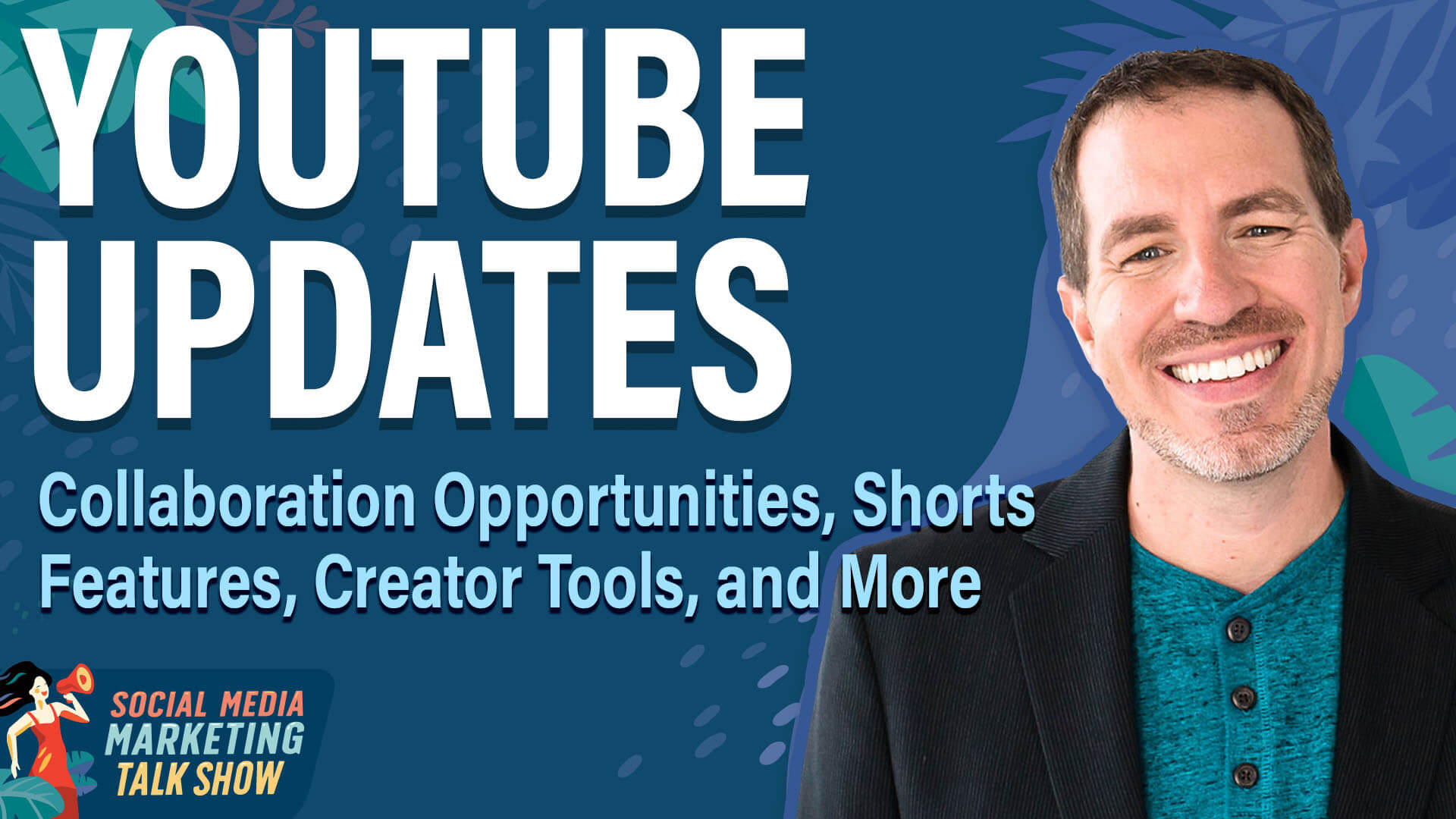
On this week's Social Media Marketing Talk Show, host Jerry Potter breaks down the latest YouTube news and what it means for marketers like you.
YouTube Monetization Updates and Brand Collaborations
Brand collaborations have been a big thing over the last couple of years on YouTube, and now they're making them even easier. If your brand wants to work with influencers, for example, and you do this through the brand marketplace, there are new things to note.
One major update is linkable Shorts. Imagine somebody makes a Short about your business and it's sponsored. Now they'll be able to link it back to your website, which Potter describes as huge. Also, AI-powered product tagging and expanded YouTube shopping access are coming to more markets. That area is growing and growing and growing. If you haven't delved into that, it's definitely something to maybe think about this quarter or maybe at the beginning of 2026.
YouTube is also piloting another program called Open Call. If you want to work with creators or influencers to make content about your brand, this is inside of Brand Connect on YouTube, but it's just for the US right now. If somebody is in the YouTube partner program and they want to break into sponsorships, essentially what you can do as a brand is go in and put up a branded content opportunity in the YouTube Studio app under the Earn tab.
Potter explains this is only on mobile, not on desktop, because it's for Shorts, so they only put it on mobile for now. You'd be able to post your opportunity in there. Then, creators can submit videos based on what you asked for, with no edits allowed. They can earn up to thirty-five hundred dollars per approved submission. Potter notes it says "up to," so he doesn't know if there are lower price points that you could get into this as the marketer or as the business.
One thing to know about this that Potter thinks is good on both sides: if a video is selected to be used as a partnership, it automatically becomes a partnership ad for one hundred eighty days and then after that it's a renegotiation if the brand wants to continue to use it after that. The payment goes out through AdSense, so YouTube is taking care of all of that, which Potter says is nice.
Another update is that YouTube has now grouped product tags for shopping, so you can now tag grouped products. For example, let's say that something you sell has multiple variations. This happens a lot in clothing, shoes, and certainly electronics. In the past, you'd have to go back and make sure all the stuff was always updated. Well, now you can group things with multiple variations, which will be really nice. This reduces tagging friction and avoids out-of-stock issues.
Shorts Updates and Remix Features
A new Live to Shorts preview is essentially going to extract a short video from mobile live streams, viewable after ending the stream. This is something else that was talked about a bit at VidSummit last week, where you do a live stream on mobile, so it's one of the vertical live streams, and it will automatically pull Shorts out of it. You'll be able to approve them and then publish them after it's over.
Potter finds it really interesting to see all of these ways that YouTube is making it easier to get content out on YouTube without even needing anything else, without having to use a third-party tool. He's not suggesting that people will stop editing their really nice looking videos in other tools. He certainly won't. But it is interesting to see them pushing this in quite a few different ways.
Extend with AI is a new remix feature where you take somebody else's Short and then you can add on to it. What happens is that it lets you generate AI-generated segments to the existing Shorts. Basically, you take a five-second clip from an eligible Short, choose an AI-suggested prompt, and then create a new Short with additional music and editing options. These remix Shorts are linked back to the original uploader's video, which can then boost discoverability for both people.
Extend with AI is what it's called, so that's what you want to watch for. It's rolling out globally, excluding the European Union and the UK for now, and initially in English, but they are planning to expand it to other languages and regions as well.
Inside of Shorts, they are integrating Google DeepMind's Veo to enable features like motion effects, video restyling, and even speech to song. Suno will be included in there for Shorts creators.
More Features, Tools, Changes, and Updates Discussed Include:
-
Important Update About Subscribe Button Removal
-
YouTube's Collaboration Feature for Channel Growth
-
YouTube Courses Feature
-
A/B Title Testing and Analytics Updates
-
AI-Powered Tools for Podcasts and Content Creation
-
Member-Only Stream Switch and Live Streaming Features
-
Additional YouTube Updates
Watch it on YouTube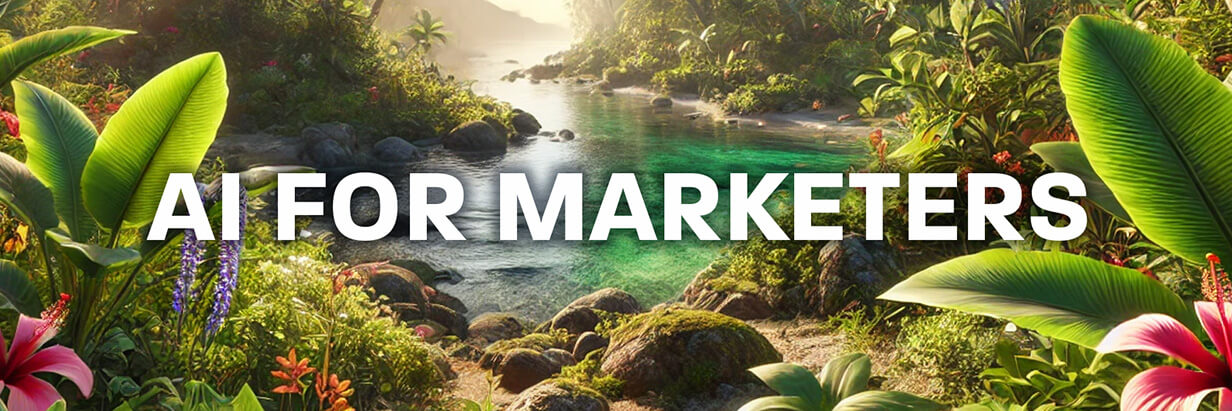
How to Make ChatGPT Sound Like YOU (Not Everyone Else)
Ever feel like your ChatGPT content reads more like a robot than you? You're not imagining it. Even seasoned marketers are finding their AI-generated content a little… meh. It's not that you're doing it wrong; it's that you're skipping a vital step.
Our latest video is 8-minute walkthrough that uncovers the quiet truth behind standout AI content. It's not about better prompts or smarter edits. It's about reshaping how you work with AI.
You'll get an insider's look at a five-step system that transforms ChatGPT from content machine to creative partner—one that captures your tone, values, and voice. Whether you're refining long-form content, repurposing for social media, or just trying to sound less like everyone else, this process is built for marketers who want quality without chaos.
If you're overwhelmed by AI hype but eager to make it work for your brand, this is the missing link you've been looking for. Watch more here.
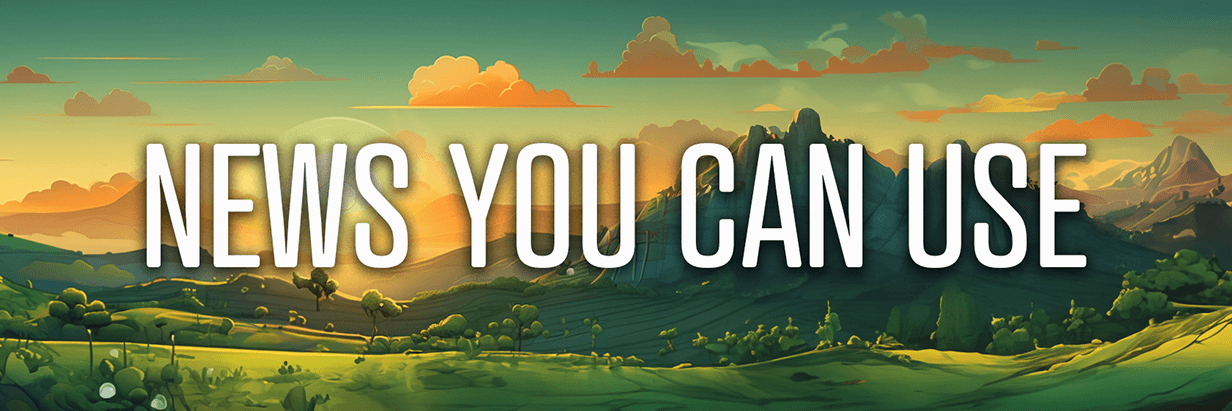
Facebook Rolls Out AI-Powered Collage & Sharing Suggestions: Facebook has launched a new opt-in feature that uses AI to suggest fun edits and collages from your camera roll, making it easier to share standout moments on Facebook and Messenger. The feature, now available in the US and Canada, highlights personal photos and videos, enhances them creatively, and recommends them for Stories, Feed, or Memories. Users retain full control over what is shared and can disable the feature at any time. Meta
Messenger for Mac to Be Deprecated: Meta is officially deprecating the Messenger desktop app for Mac. Users will be notified in-app and have 60 days before the app is fully blocked. To retain chat history, users must enable secure storage with a PIN from the desktop app before switching to Facebook.com or Messenger.com. Messenger-only users can continue to log in via Messenger.com without a Facebook account. TechCrunch reports this change also affects Windows users. Meta
Snap Unveils Major AR Updates: At Lens Fest 2025, Snap introduced sweeping updates to its AR ecosystem, including next-gen Spectacles launching in 2026 with Snap OS 2.0, Travel Mode, EyeConnect, and integrated monetization through Commerce Kit. Creators can now earn through Lens+ Payouts and build flexible AR experiences with branding-free Camera Kit. Lens Studio adds AI-powered creation tools and the new Blocks framework for modular Lens building, while Lens Games get a boost with direct Chat integration and multiplayer features. Snap also launched Snap Cloud to support scalable, privacy-safe AR experiences. Snap
Claude Code Launches in Browser and iOS Preview: Anthropic has launched Claude Code on the web in beta, enabling developers to delegate and run coding tasks directly from their browser. The tool allows for multiple concurrent sessions across GitHub repositories, complete with real-time progress updates and automatic pull request creation. It runs securely in isolated sandbox environments with configurable network access and protected Git credentials. Additionally, Claude Code is now accessible on iOS, making mobile development workflows possible. The feature is currently available to Pro and Max users. Claude
Instagram Tests New Tab-Based Navigation Layout: Instagram is testing a redesigned navigation experience that prioritizes Stories and Feed, Reels, and DMs as its main tabs. Users can now swipe between these tabs, reflecting the platform's emphasis on Reels and messaging as the most-used features. The update is available as an early opt-in trial to help users adjust ahead of a broader rollout. Mosseri via Threads
X Debuts Pay-Per-Use API and New Developer Console: X has introduced a redesigned Developer Console along with a consumption-based API billing model, eliminating fixed monthly fees. The new system uses a credit-based pricing approach, offering flexible, scalable costs with real-time monitoring. Developers benefit from fewer restrictions, expanded endpoint access, and a smoother app-building experience. Pricing starts as low as $0.005 per API call, making it accessible for smaller teams and large-scale projects alike. X
X Launches Handle Marketplace for Inactive Usernames: X is rolling out an industry-first Handle Marketplace, allowing Premium subscribers to claim inactive handles through complimentary or paid options. Users can now join a waitlist to submit early requests and receive updates on availability. The platform will initially open to Premium+ users on the waitlist in the coming weeks, offering a new way to secure desirable usernames. X
OpenAI Launches ChatGPT Atlas Browser for macOS: OpenAI has introduced ChatGPT Atlas, a new macOS web browser that integrates ChatGPT directly into the browsing experience. With features like Agent Mode, users can delegate tasks—such as research, shopping, or summarizing content—without switching tabs. Atlas includes browser memories and granular privacy controls to personalize assistance while protecting user data. Agent Mode is now in preview for Plus, Pro, and Business users, offering deeper task automation within a secure framework. Versions for Windows, iOS, and Android are coming soon. OpenAI
ChatGPT to End WhatsApp Support by January 2026: ChatGPT will no longer be accessible on WhatsApp starting January 15, 2026, following changes to WhatsApp's policies. To continue conversations and preserve chat history, users are encouraged to link their phone number to a ChatGPT account through the 1-800-ChatGPT contact profile. ChatGPT remains available on iOS, Android, web, and MacOS (via ChatGPT Atlas), offering advanced features like voice interaction and file uploads. Conversations won't transfer automatically after the cutoff date, so linking your account early is recommended. OpenAI
Snapchat's Imagine Lens Now Free for All U.S. Users: Snapchat has expanded access to its AI-powered Imagine Lens, allowing all U.S. users to generate and share custom images from text prompts—no subscription required. Originally limited to Lens+ and Platinum subscribers, the feature is now rolling out to Canada, Great Britain, and Australia, with additional markets to follow. Users receive a limited number of free generations and can find the Lens in the Carousel or via search. Snapchat encourages fun, creativity, and transparency when sharing AI-generated content. Snapchat
YouTube Expands Community Tools, Live Features, and Launches Creator Reinstatement Pilot: YouTube is rolling out several updates this week, including the launch of Community posts on desktop, enabling both creators and viewers to post and moderate content via computer. A new AI-powered Smart Q&A sticker is also available on mobile live streams, offering low-friction audience interaction. Additionally, a new pilot program allows select previously terminated creators to request the creation of a new channel after a year, though eligibility is limited. To celebrate Halloween, themed gifts are now available on vertical livestreams through November 3. YouTube
What Did You Think of Today's Newsletter?
Michael Stelzner, Founder and CEO
P.S. Add
michael@socialmediaexaminer.com into your contacts list. Use Gmail?
Go here to add us as a contact.
We publish updates with links for our new posts and content from partners. Your information: Email:
tukangpostemel@gmail.com Opted in on: 2021-09-06 17:03:43 UTC.









